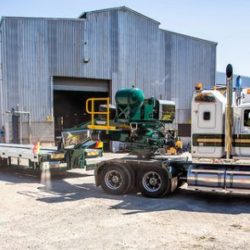Welcome to our series on transport infrastructure reform. We will be looking at the information released by Infrastructure Australia, an independent regulatory body to see what the national priorities are for freight and heavy transport.
In part two, we will be looking at the recent inquiry on the National Freight and Supply Chain Priorities led by the Department of Infrastructure and Regional Development by recapping the responses from some of Australia’s individuals, transport corporations and associations.
The future looks like…
As it stands, Australia’s cities are undergoing a process of rapid change. Between now and 2031, the populations of major cities are projected to increase by 7 million. Without action, the congestion of our larger cities will skyrocket from $13.7 billion to $53.3 billion by 2031.
With Australia’s freight demands expected to double by 2030, a stronger emphasis on improved infrastructure networks is required to maintain productivity and open opportunities in a global market.
Getting the governance right in all our cities, not just the major ones, will be central to Australia’s success. Infrastructure Australia believes that the delivery of long-term metropolitan planning, supported by integrated governance frameworks, must be a high priority for state and territory governments.
The Australian Infrastructure plan so far
The need for a national infrastructure plan has never been greater. With demand for Australia’s resources and services, emerging technologies and environmental strain, we must rethink our economic infrastructure. Reform is at the centre of the plan set out by Infrastructure Australia and focuses on these key areas:
- Productive cities, productive regions: Focusing on making better use of our existing infrastructure through technologies and integrated systems that drive great efficiency. Examples included medium-to-high density development within established urban areas that is well-connected by the infrastructure to jobs and education, as well as a “turn up and go” public transport system.
- Efficient infrastructure markets: This will require funding from the taxpayer and users, but seriously consider the implications of individuals and families on low income. They have proposed the introduction of heavy vehicle charging within five years.
- Sustainable and equitable infrastructure: Focusing on infrastructure that anticipates the long-term effect on our economy, society and environment. Making infrastructure more sustainable will also make it more efficient.
- Better decisions and better delivery: Focusing on ways to stamp out incidents of poor planning, project selection and delivery by greater use of technology in planning and designing infrastructure.
High priority infrastructure projects that affect freight movements, mining transport companies and oversize transport include:
- M14 motorway upgrade – Parramatta to Lapstone) – Connectivity in outer western Sydney
- WestConnex – Sydney inner west road congestion
- Melbourne Metro Rail – Melbourne rail network capacity
- M80 Ring Road upgrade – Melbourne M80 Western Ring Road congestion
- Ipswich Motorway Rocklea: Darra Stage – Southern Brisbane – Ipswich road network capacity
- Western Sydney Airport – Sydney aviation capacity
- Perth Freight Link – Perth freight capacity
You’ve made it to the end of part one. Stay tuned for part two, where we look at the submissions from Australians as part of the National Freight and Supply Chain Priorities.
The Drake Group are the specialists in heavy transport trailers. Through Drake Trailers and O’Phee Trailers, your business will benefit from a transport trailer that’s safe, economical and built to last. Get in contact with The Drake Group today to speak about your general and oversize transport requirements.


